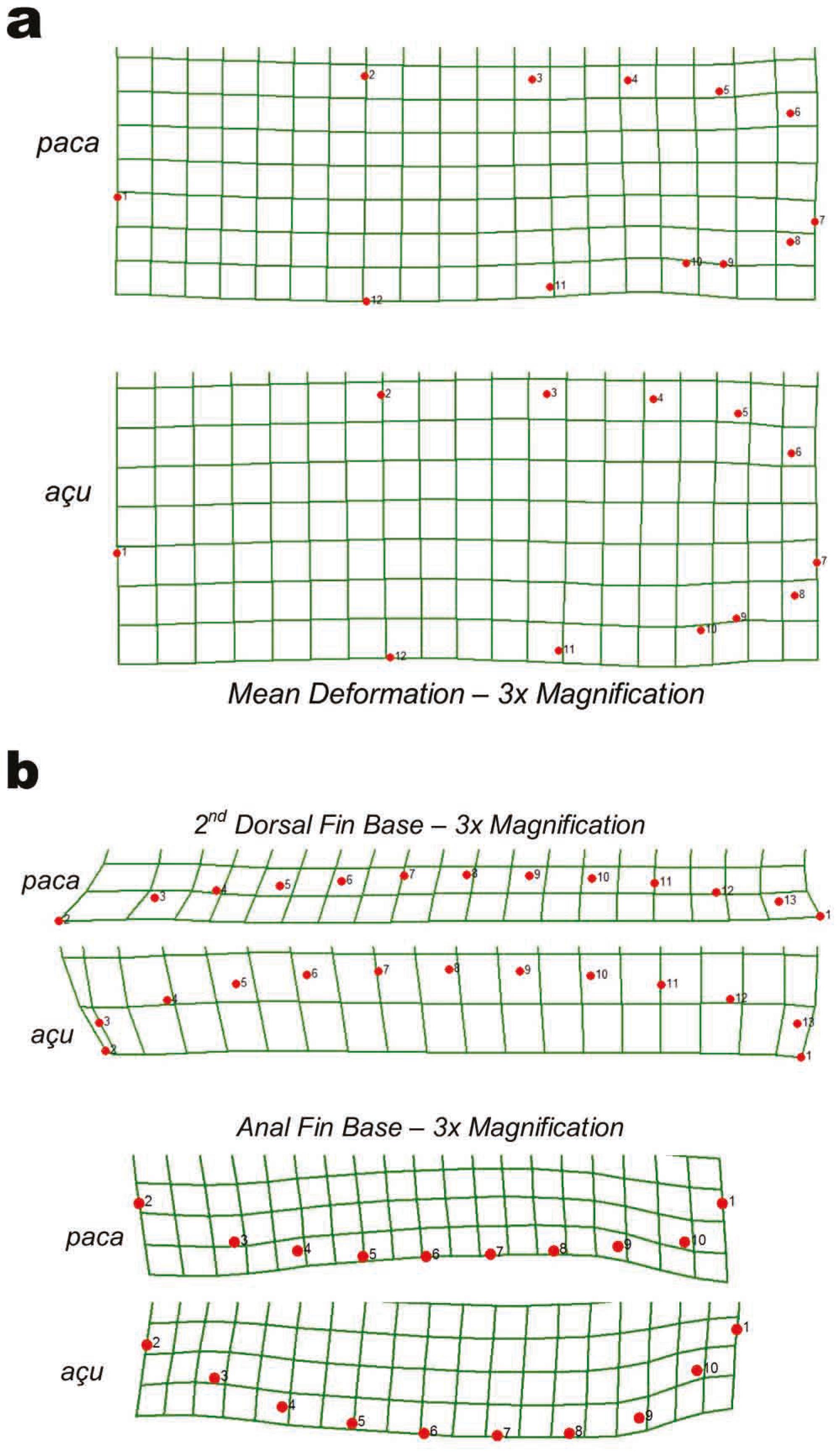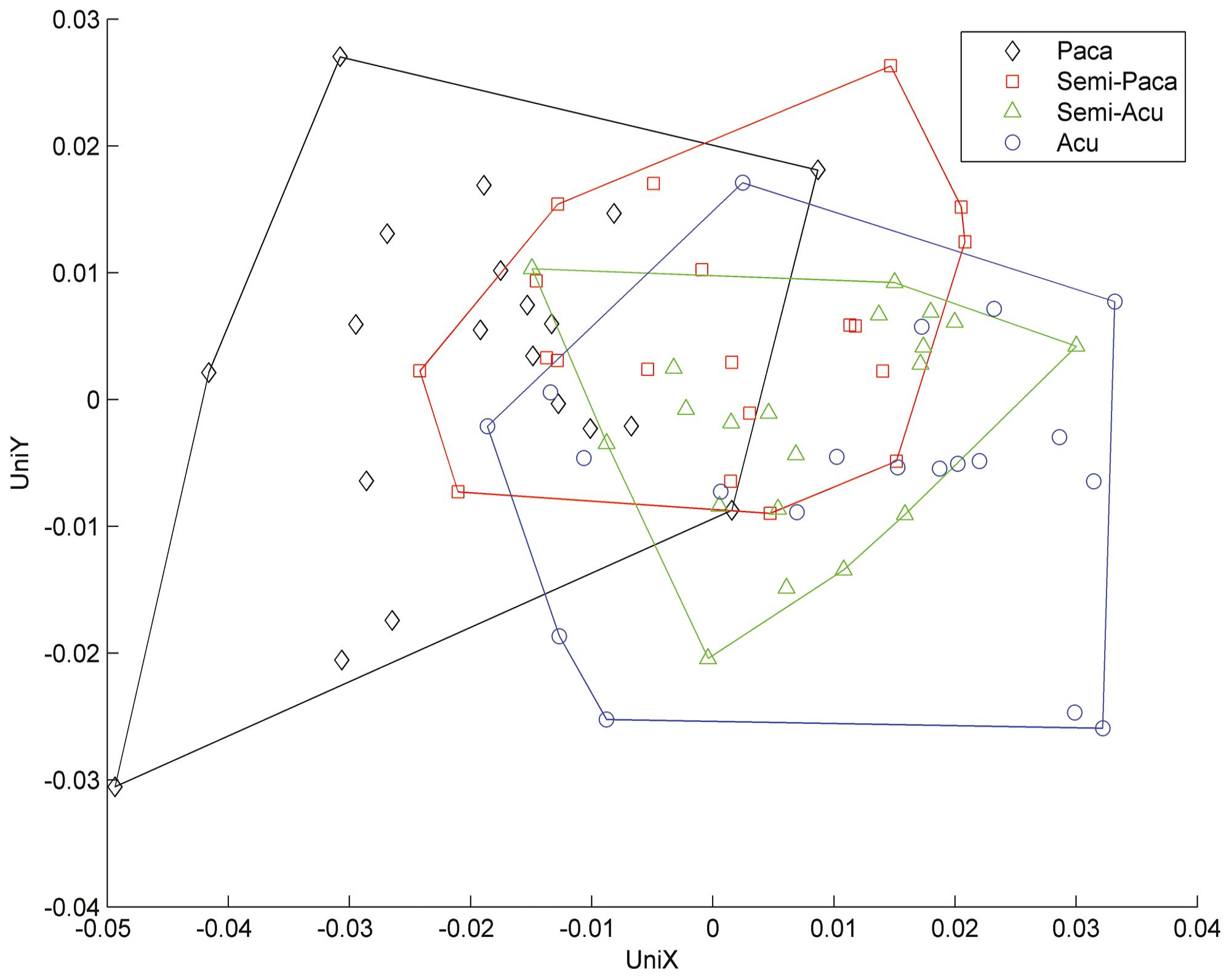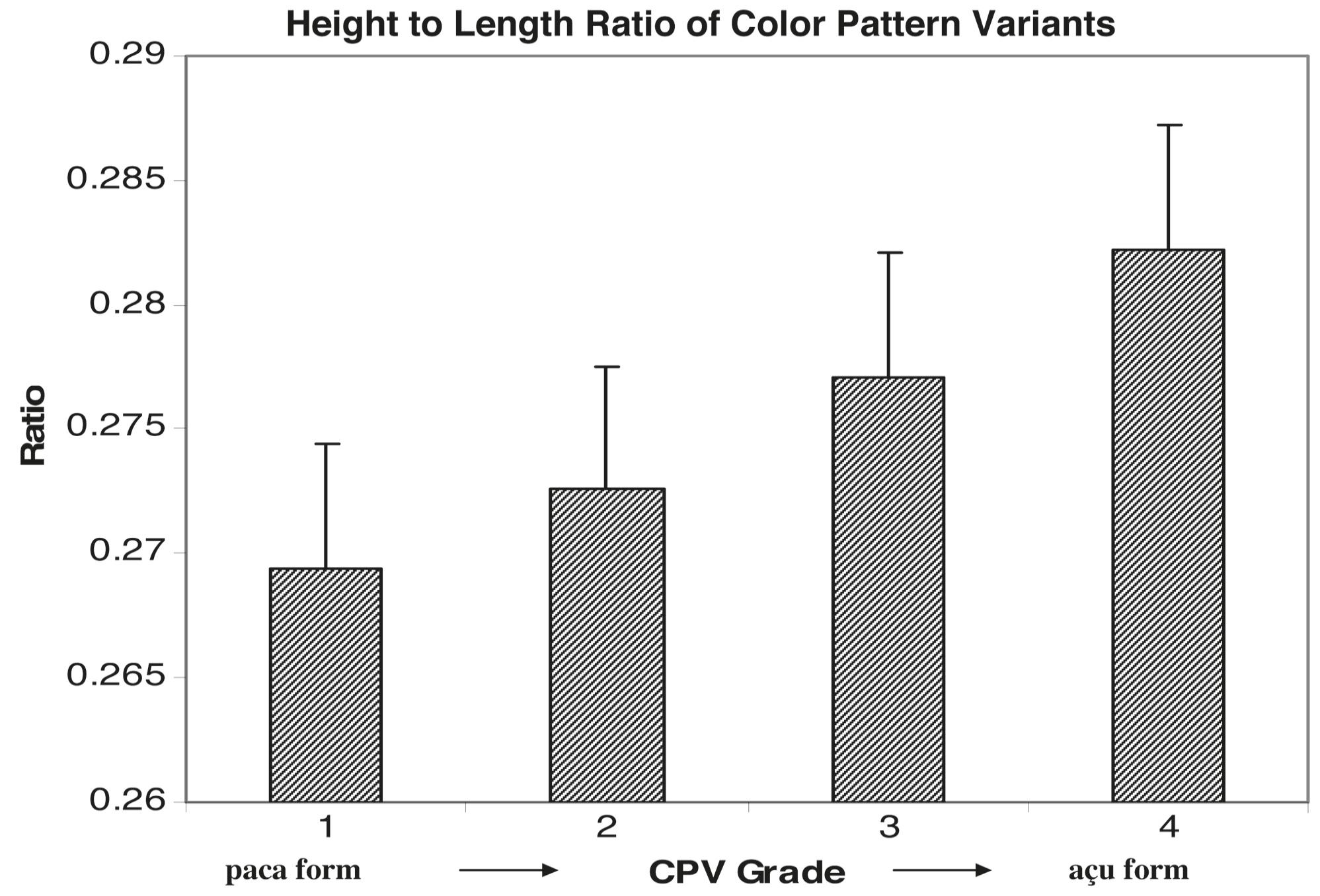Previously recognized color and pattern variants of adult Cichla temensis in Amazon flood pulse river environments reflect the cycling of individuals through seasonal sexual maturity and spawning. Individuals also vary in shape from blocky to fusiform. To determine if shape differences are related to patterns of fat reserve deposition and utilization, and to quantify the relationship of shape with color and pattern variation and life history status, specimens in each of four previously defined grades of color and pattern variation were compared using geometric morphometric techniques. Progressive shape changes occurred between grades independent of sex and correlated to gonosomatic index (GSI). Thin plate spline deformation visualizations indicate that the observed shape differences are related to fat deposition patterns. The seasonal timing of shape change and its link to color pattern variation, sexual maturity and local water level conditions suggests a relationship between the physiological and behavioral characteristics of C. temensis and the cyclical flood pulse pattern of its habitat.
Fat reserves; Functional morphology; Gonadosomatic index; Hepatosomatic index; Physiology





